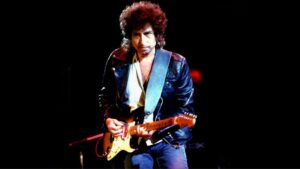
Northern Lights Hunters Warned: Dangerous Volcano Zones in the country to Avoid
For Northern Lights enthusiasts, chasing the mesmerizing auroras across the skies of North America is a dream pursuit. However, experts are urging hunters to be cautious and avoid certain regions in the United States due to the threat posed by active volcanoes. While the auroras offer breathtaking beauty, the looming dangers in volcanic areas cannot be ignored.
### **The Connection Between Northern Lights and Volcanic Regions**
The Northern Lights, or aurora borealis, are a natural phenomenon caused by charged particles from the sun interacting with Earth’s magnetic field. They are best observed in northern latitudes, often in states like Alaska, Minnesota, and parts of the Pacific Northwest. Coincidentally, some of these regions are home to volcanic activity, creating a potential hazard for those venturing into these areas to catch a glimpse of the auroras.
While most volcanoes remain dormant for extended periods, active volcanic zones can pose significant risks, including sudden eruptions, toxic gases, and unstable terrain. These dangers are magnified during periods of volcanic unrest, which can occur with little warning.
### **Regions to Avoid for Safety**
1. **Mount St. Helens, Washington**
Mount St. Helens, one of the most well-known volcanoes in the United States, erupted catastrophically in 1980, causing widespread devastation. Although it has been relatively quiet in recent years, the volcano remains active and is closely monitored by geologists. The surrounding area, while beautiful, is still subject to potential landslides, gas emissions, and seismic activity. Northern Lights hunters drawn to Washington’s dark skies should prioritize safer locations away from this volcanic zone.
2. **Yellowstone National Park, Wyoming**
Yellowstone sits atop a supervolcano, one of the largest on Earth. While the park is a popular tourist destination and offers stunning views, it is also one of the most geologically active areas in the country. The Yellowstone Caldera experiences regular geothermal activity, including geysers and hot springs, which are signs of underlying volcanic activity. Although the chances of a major eruption are slim, even minor events could pose significant risks to those in the area. Northern Lights enthusiasts should avoid this region, especially during periods of heightened seismic activity.
3. **Aleutian Islands, Alaska**
Alaska is one of the best places in the U.S. to witness the Northern Lights, but the Aleutian Islands, a chain of volcanic islands extending westward into the Pacific Ocean, are not ideal. This region is home to numerous active volcanoes, including Mount Cleveland and Shishaldin Volcano. Frequent eruptions, ash clouds, and volcanic earthquakes make this area highly dangerous for adventurers seeking auroras.
4. **Cascade Range, Oregon and Northern California**
The Cascade Range, which includes Mount Rainier, Mount Hood, and Mount Shasta, is another volcanic hotspot. While these peaks are stunning, they remain active and could potentially erupt. Volcanic hazards such as lahars (volcanic mudflows) and pyroclastic flows make this region risky for aurora seekers.
### **Volcanic Hazards to Consider**
Volcanoes present various dangers that are not always visible or predictable. These include:
– **Toxic Gas Emissions**: Volcanic gases like sulfur dioxide can be harmful or even fatal if inhaled in high concentrations.
– **Ash Fallout**: Eruptions can send plumes of ash into the air, which can travel for miles and create breathing hazards.
– **Landslides and Mudflows**: Volcanic terrain is often unstable, leading to landslides or lahars that can occur even without an eruption.
– **Sudden Eruptions**: Even dormant volcanoes can erupt with little warning, posing immediate risks to anyone in the vicinity.
### **Safer Alternatives for Northern Lights Viewing**
For those eager to witness the auroras, there are plenty of safer locations that offer dark skies and optimal viewing conditions without the risks associated with volcanic areas. Consider these spots:
– **Fairbanks, Alaska**: A prime destination for Northern Lights, far from active volcanic zones.
– **Boundary Waters, Minnesota**: Known for its pristine wilderness and dark skies, it’s a safe and beautiful choice.
– **Upper Peninsula, Michigan**: Offers excellent aurora views with no volcanic hazards.
### **Conclusion: Enjoy the Lights Safely**
While the Northern Lights are a spectacular natural wonder, safety should always come first. Avoiding regions with active volcanic activity is crucial for aurora hunters, as the risks can far outweigh the rewards. By choosing safer locations and staying informed about volcanic hazards, enthusiasts can enjoy the beauty of the auroras without putting themselves in harm’s way.




